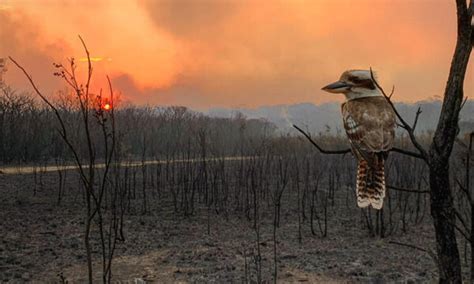In a world where climate change is no longer just a distant threat but a harsh reality, Australia finds itself at the forefront of a pressing issue – becoming an uninsurable nation. The escalating risks of fires, floods, and other disasters are painting a grim picture for insurance affordability in the country.
The haunting scenes of devastation from the Los Angeles fires serve as a stark reminder to Australians of their own vulnerability to the impacts of climate change. The stories of loss and destruction resonate deeply with those who have already faced similar tragedies within Australia’s borders.
As we delve deeper into this crisis, it becomes evident that the challenges extend beyond mere environmental concerns. The inability of some individuals to secure insurance coverage – even at exorbitant prices – coupled with potential lapses in government-backed insurance schemes unveils a multifaceted problem that demands urgent attention.
A Harsh Reality Unfolds
Even before Australia grappled with its cost-of-living crisis, the onslaught of extreme fires and floods had pushed many households to confront the soaring costs associated with home insurance. For some, affordability has become an elusive dream as insurance companies shy away from covering specific disaster risks in certain regions.
A sobering 2022 report by the Climate Council painted a dire picture – projecting that 4% of homes across Australia could be deemed uninsurable by 2030. In high-risk areas like Shepparton, Victoria, this figure soared to a staggering 90%, signifying the widespread impact of climate-induced vulnerabilities on insurance accessibility.
The Climatic and Economic Nexus
The surge in insurance costs across Australia paints a vivid narrative intertwined with rising global temperatures and escalating disaster frequencies. Between March 2022 and September 2024, insurance expenses spiked by 28%, attributing this escalation to not only construction costs but also the profound influence of climate change on risk profiles.
With each passing year setting new temperature records and witnessing unprecedented financial losses due to disasters, there emerges an unmistakable correlation between climatic shifts and increasing financial burdens on insurers – burdens inevitably passed down to policyholders through amplified premiums.
Navigating Towards Solutions
In navigating these turbulent waters of escalating risks and dwindling insurability options, one question looms large – what is the solution? The path forward necessitates a strategic shift towards investing substantially in adaptation measures aimed at enhancing community resilience against climatic perils.
From bolstering infrastructure defenses such as river levees and fire breaks at communal levels to implementing stringent building codes emphasizing resilience at an individual property level, proactive steps must be taken swiftly. Government interventions offering support for such initiatives prove paramount amidst mounting uncertainties.
Moreover, contemplations around relocation strategies for high-risk zones gain traction as communities grapple with tough decisions about sustainable urban planning practices. Deliberate efforts towards constructing future urban landscapes mindful of potential hazards emerge as crucial endeavors vital for mitigating future insurability crises.
Expert Insights
According to experts like Nicki Hutley, an independent economist closely aligned with climate advocacy groups, overlooking these warning signals could potentially plunge economies into turmoil while exacerbating societal vulnerabilities. Embracing adaptation strategies now stands as our best defense against an uncertain future fraught with climatic uncertainties.
As discussions unfold surrounding long-term solutions for sustainable insurance models amidst evolving climate threats, one thing remains clear—proactive measures today are investments safeguarding tomorrow’s generations from bearing the brunt of unchecked environmental degradation.
By charting a course guided by resilience-building efforts at both individual and communal levels while reimagining urban landscapes through a lens focused on risk mitigation strategies,
Australia holds within its grasp the power to reshape its narrative from one marred by insurability woes
to one anchored in preparedness,
resilience,
and foresight—a legacy worth striving for amid tumultuous times.

